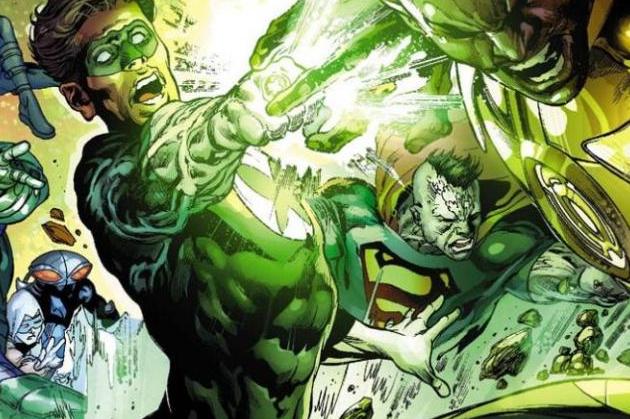Justice League #26
Writer Geoff Johns Artist Ivan Reis
Introduction
Justice League has been fairly entertaining since the launch of the New 52. After the first year of the series, the book began to really shine. The Forever Evil teases so far have been quite interesting with last issue starring Owlman really stealing the show thus far. Owlman was examined to be a fairly complicated human being that has a horrific backstory. He is such a well developed character, that he ends up being more than a simple antithesis to Batman. What has been glossed over since the initial installments of Forever Evil, has been the fate of Nightwing after the reveal last issue. Hopefully in this issue new ground will be broken with the status quota changing adventures of Nightwing. Many dangling plot lines are beginning to come to the surface. Unfortunately, now that Marvel has gotten readers so used to fast and furious shipping schedules it is hard for Forever Evil to build up the steam that it needs to keep going. The reveal of where all of the different heroes disappeared to after Trinity War was either not yet revealed which leads to bad pacing, or glossed over awkwardly in Justice League Of America. Even if this has not been the best event, it is far from the worst that DC has ever published, and there is no reason why the tie-ins should not be good.
Writing
Geoff Johns reveals some interesting origins for the rest of the Syndicate members to good effect. It is slightly daunting to get the first story of each character in such quick succession, but they all have at least one interesting facet to them. The main story revolving around Grid is a really interesting dark twist on the vision. The framing sequence really works here, which makes the issue seem like more than the sum of it’s parts. The origin of Power Ring really is quite pathetic, yet is also interesting to see how a world gone wrong can affect the members of the league. The tease hidden in the back with the masked man is also fascinating, the mystery adds something to the issue that was missing from before. Cyborg’s story is both hopeful and tragic at the sametime, it is a really great page from Reis that gets all sorts out of emotions stirring. Even if Forever Evil does have some consistency issues, Justice League remains really entertaining.
Art
Art by Ivan Reis looks slightly off, and it is hard to tell why. It is difficult to try and figure out who exactly is doing what, thanks to how DC handles the credits page in the opening page of their issue. The opening sequence has the usual blend of excellence that readers would come to expect from Ivan Reis. Then the coast city scenes undo all the good will that he has crafted earlier on in the issue, and starts to tear things apart. The scenes following the aforementioned one have a Joe Prado feel that ties things together well enough. The bottom line is that something was mishandled here, whether it was a rush job or another inker. This book is so close to having that usual spark of Reis greatness. The pages with Grid staring at the reader is absolutely beautiful, and features such a lush amount of detail and vibrant colors. With so many colorists here, I cannot even credit which color artist was responsible for that page.
Conclusion
Justice League #26 is a nice companion too Forever Evil. It adds some insight and character arcs that readers would otherwise be missing. Even though Geoff Johns has a great script, there are some really uneven pencils on this book marred by so many people involved in the art process.





